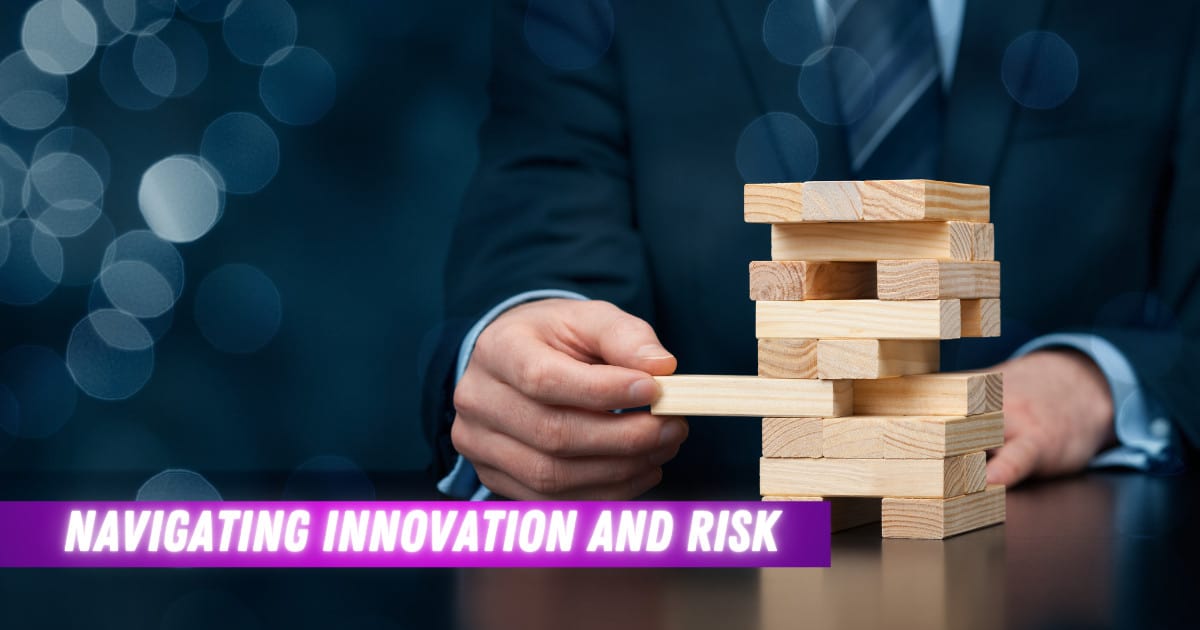Welcome, fellow leaders and teams, to the ever-evolving dance between innovation and risk management. In my journey as an executive leadership and team coach, I’ve witnessed firsthand the challenges and triumphs that come with striking the delicate balance between fostering innovation and mitigating risks. Today, let’s dive deep into practical strategies and insights that can guide senior leaders and teams like you through this intricate terrain.
Embracing a Culture of Innovation
Innovation isn’t just about groundbreaking ideas; it’s a mindset that permeates every aspect of an organization. To foster innovation:
- Cultivate a Culture of Creativity: Encourage your team to think outside the box and embrace experimentation. Create spaces where diverse perspectives are valued and celebrated.
- Promote Open Communication: Break down silos and encourage cross-departmental collaboration. Ideas flourish when there’s open dialogue and a free flow of information.
- Allocate Resources for R&D: Innovation requires investment. Set aside dedicated resources for research and development initiatives. Empower your teams to pursue bold ideas without fear of failure.
- Incentivize Experimentation: Reward calculated risks and celebrate both successes and failures. Encourage a culture where failure is seen as a stepping stone towards innovation.

Assessing Risk Appetite
Understanding your organization’s appetite for risk is crucial in navigating the innovation landscape. Here’s how you can evaluate risk:
- Define Risk Tolerance: Work with key stakeholders to define the organization’s risk tolerance. What level of risk is acceptable in pursuit of innovation, and what could potentially jeopardize the organization’s stability?
- Conduct Thorough Risk Assessments: Identify potential risks and opportunities across all areas of the business. Assess the likelihood and impact of each risk to prioritize mitigation efforts.
- Align with Strategic Goals: Ensure that your risk appetite aligns with your organization’s strategic objectives. Balancing short-term gains with long-term sustainability is essential in risk management.
Implementing Effective Risk Management Practices
Once you’ve assessed your organization’s risk appetite, it’s time to put effective risk management practices into action:
- Develop Robust Processes: Establish clear processes and procedures for identifying, assessing, and mitigating risks. Ensure that everyone in the organization understands their role in managing risk.
- Assign Accountability: Designate individuals or teams responsible for overseeing risk management efforts. Hold them accountable for regularly monitoring and evaluating risks.
- Monitor and Evaluate: Risk management is an ongoing process. Continuously monitor the business environment for new risks and adapt your strategies accordingly.
- Communicate Effectively: Transparent communication is key in risk management. Keep stakeholders informed about potential risks and mitigation efforts to maintain trust and confidence.

Conclusion
Innovation and risk management are two sides of the same coin, and mastering the balance between them is essential for long-term success. By fostering a culture of innovation, understanding your organization’s risk appetite, and implementing effective risk management practices, you can navigate the complexities of today’s business landscape with confidence. As your executive leadership coach, I’m here to guide you every step of the way on your journey towards sustainable growth and prosperity.
Want to learn how to create a culture your employees will thrive in? Reach out to us Schedule a call or video conference with Christopher Lawrence or call us right now at 1-844-910-7111.



